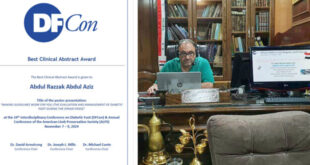Damascus, SANA_ There, on a plateau about 1320 meters above sea level, Deir Mar Musa al-Habashi (The monastery of saint Moses the Abyssinian), is located in a scene calling the viewer to meditate and think as a worshiped priest away from the noise.
The Monastery, approximately 15 km east of Nabk city, is a tourism destination for those who seek peace, contemplation, calmness and beauty.
It was built by the Romans to monitor the road between Damascus and Tadmor( Palmyra) before the coming of monks in the 16 century and turned into a monastery about 1,500 years ago.
The Monastery was named after St. Moses the Abyssinian, the son of a king of Ethiopia who left his country looking for the kingdom of God. He traveled to Egypt and then to the Holy Land in Palestine before he became a monk and lived in Qara, to the north of al-Nabk region in Damascus Countryside, and then as a hermit not far from there in the valley of what is today the monastery.
The church of the monastery, which was built in the 16 AD, is divided into two parts; a nave with two aisles and is illuminated by a high eastern window and the second part is the sanctuary, which contains the altar and the apse and is separated from the rest of the church by a stone and wooden chancel screen.
Three layers of frescoes can be seen on the ornamented walls. The first layer dates back to the middle of the 11 century, the second belongs to the end of the 11 century and the third from the 13 century.
Great icons and images covered the church walls such as the image of the Annunciation of the Blessed Virgin Mary, the four evangelists are painted above the four columns looking upwards to copy a heavenly page with Syriac letters, ten virgins carrying lamps, in addition to images of Jesus Christ, Virgin Mary and John the Baptist.
The paintings that adorn the walls of the monastery date back to three historical stages. each of which has its own artistic style.
The first of these stages dates back to 1058 and 1095; the influence of Hellenistic art is evident in the drawings as it appears in the painting of the prophet Elias giving his mantle to the prophet Elisha.
Paintings of the second stage were influenced by Byzantine art as in the paintings of the Baptism of Jesus, St. Simon al-Amoudi and some writings in Arabic Language and the baptismal font.
Most of the paintings date back to the third phase of 1200 AD, they are of a Syriac character, one of which shows the announcement of the birth of Jesus Christ while the other shows the scene of the judgment ” day of religion” which is divided into four levels, the highest of which contains the divine throne.
Gh.A.Hassoun
 Syrian Arab News Agency S A N A
Syrian Arab News Agency S A N A












